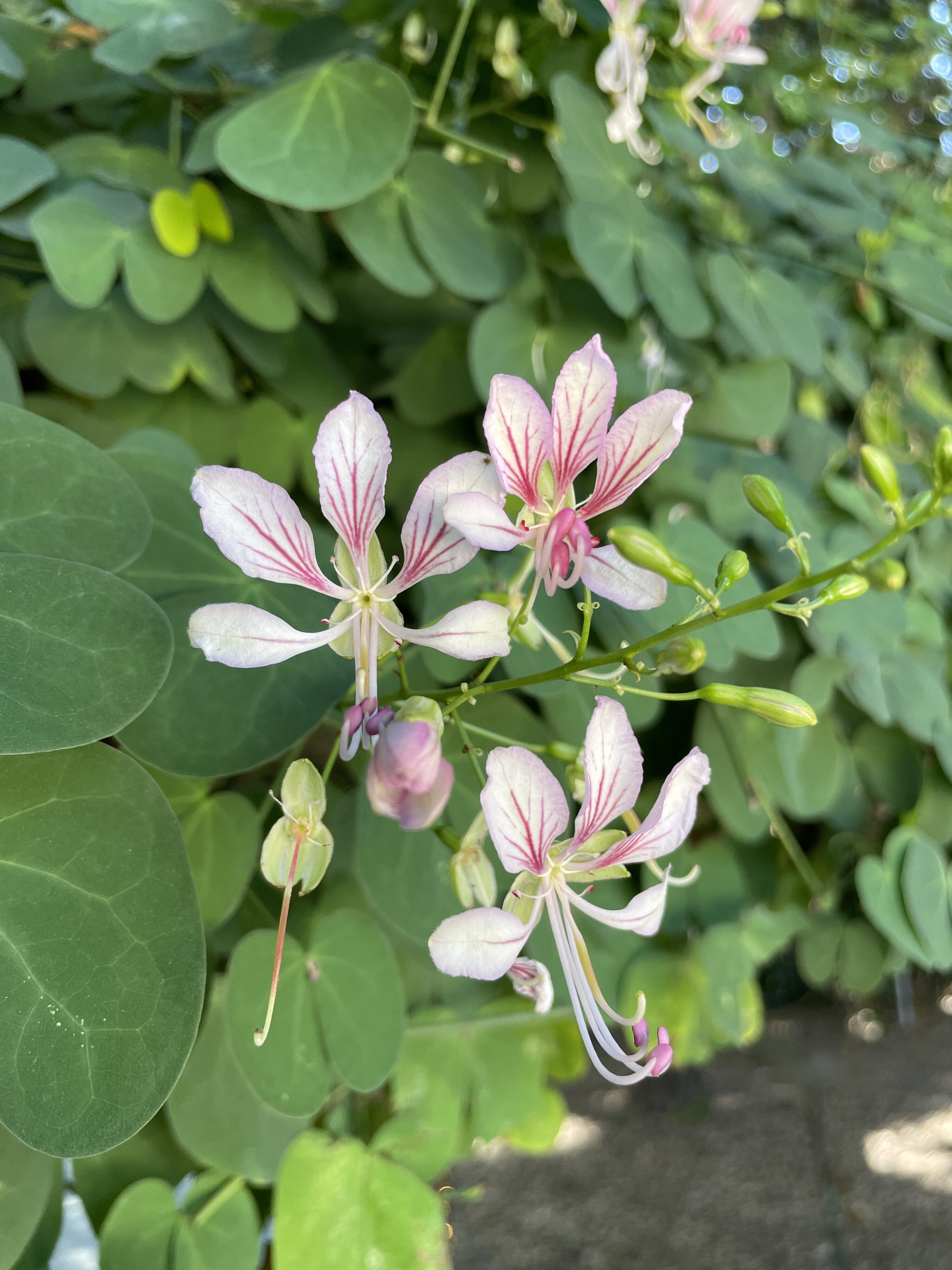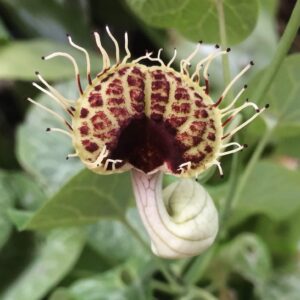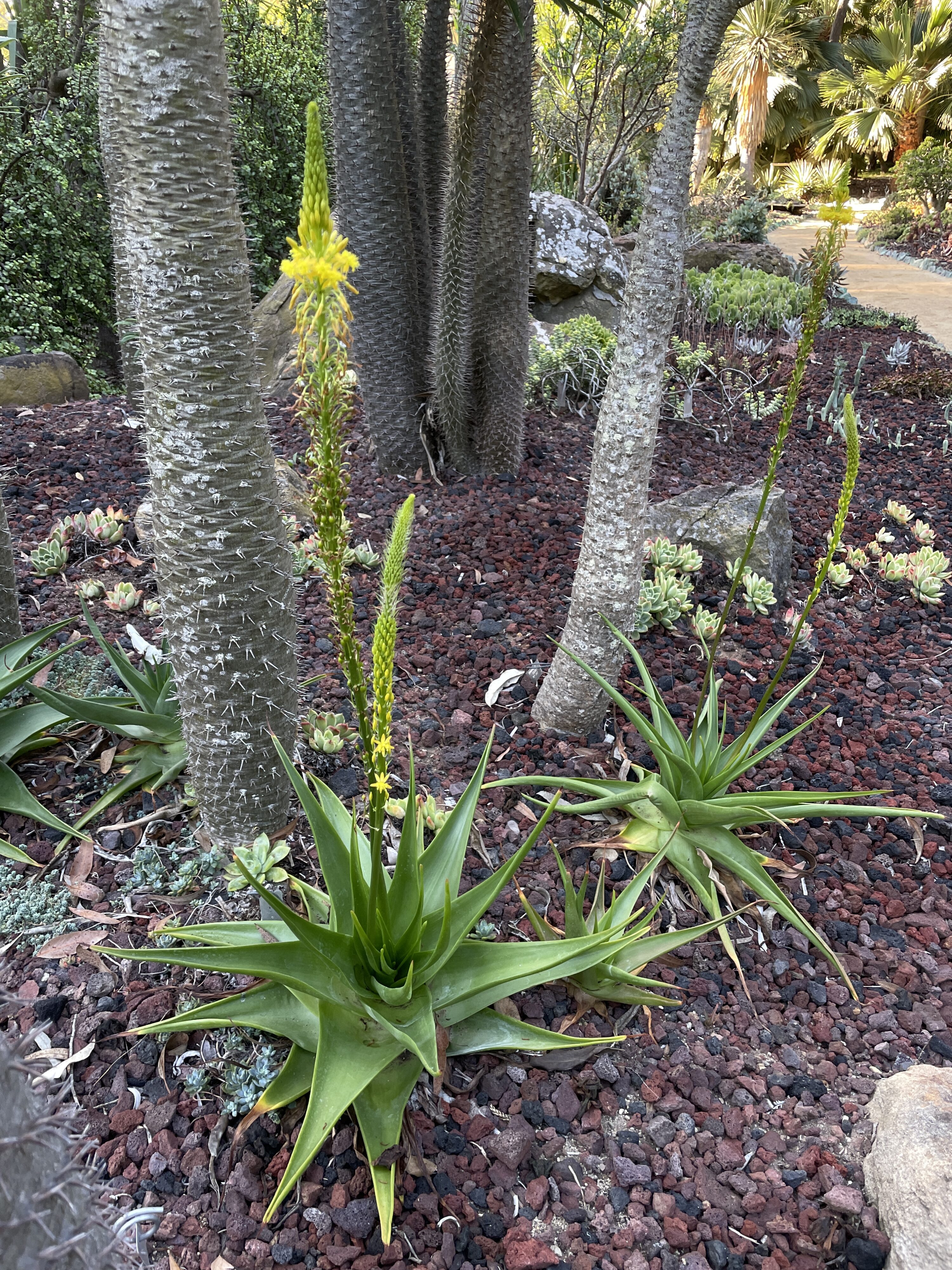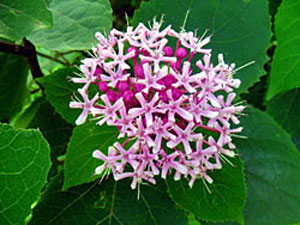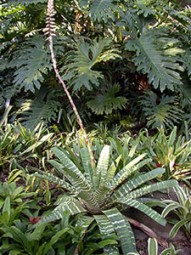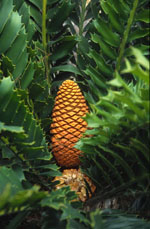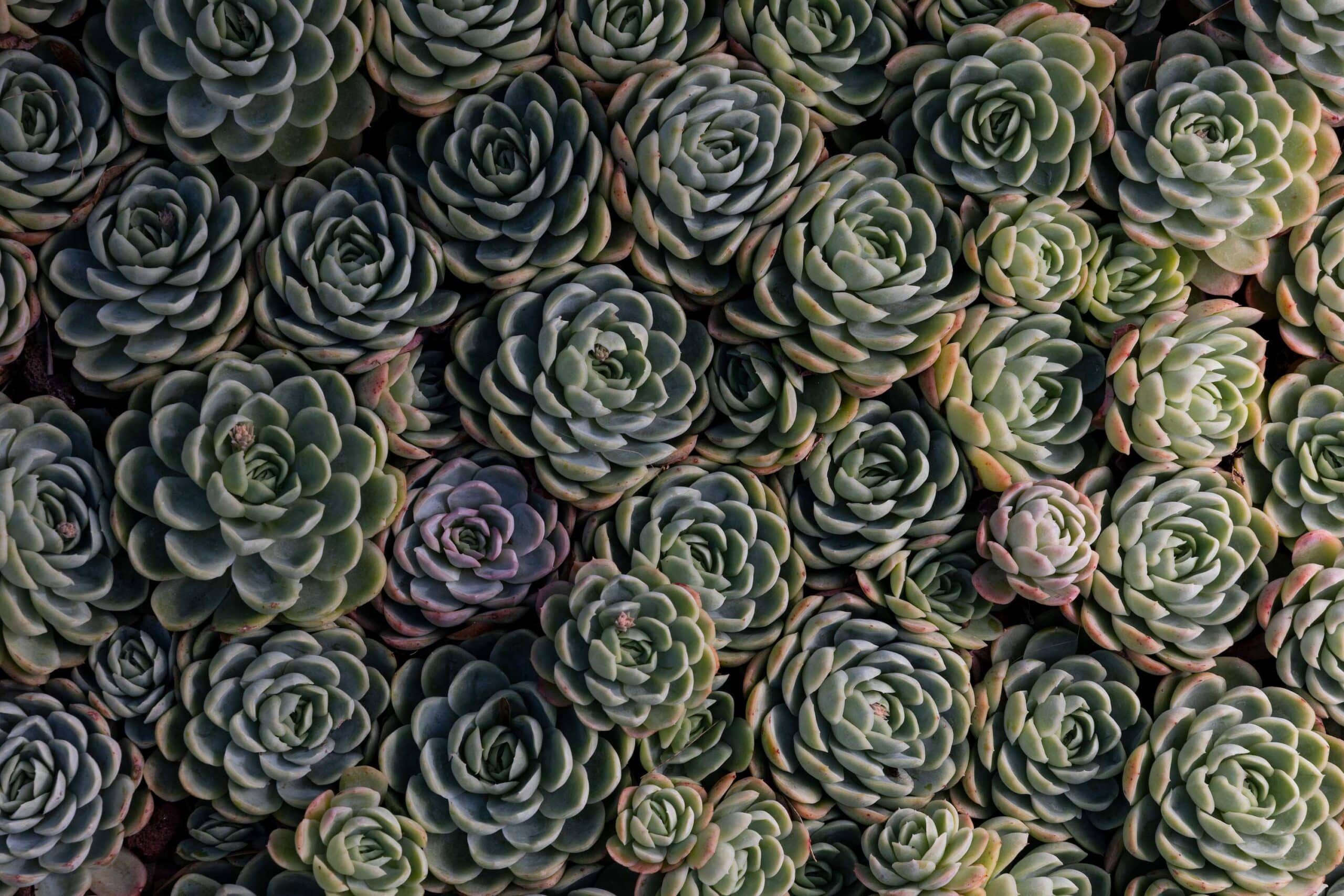
Plant Highlights
October
-
Begonia peltata
lily-pad begonia, fuzzy leaf begonia
Highlight Month:
October
Nativity:
Southern Mexico to Honduras
Growth Habit:
B. peltata has almost-circular felted leaves coated in a layer of white fuzz. The specific epithet refers to the peltate leaves with the petiole, or leaf stalk, attached to a point on the underside of the leaf, like a waterlily or lotus.
Growing Requirements:
This begonia thrives in full sun to dappled shade, can handle semi-dry conditions, and is hardy to USDA Zone 9a. It reaches 2-4 feet tall and wide, becoming shrub-like with age.
Features:
Like all begonias, B. peltata is monecious and produces male and female flowers on separate structures of the same plant. Superficially, the flowers appear identical, both with white petals and yellow reproductive parts. This is a type of pollination mimicry called pseudoanthery. In the case of begonias, nectarless female flowers imitate pollen-filled yellow stamens of the male flowers to attract pollinators for fertilization. Female flowers can be distinguished by the presence of a three-angled ovary behind the petals, and a cluster of spiraled yellow stigmas.
Where at Lotusland:
Begonia peltata can be found in the Fern Garden at Lotusland, near the entrance on the Main Drive across from the Insectary Garden.
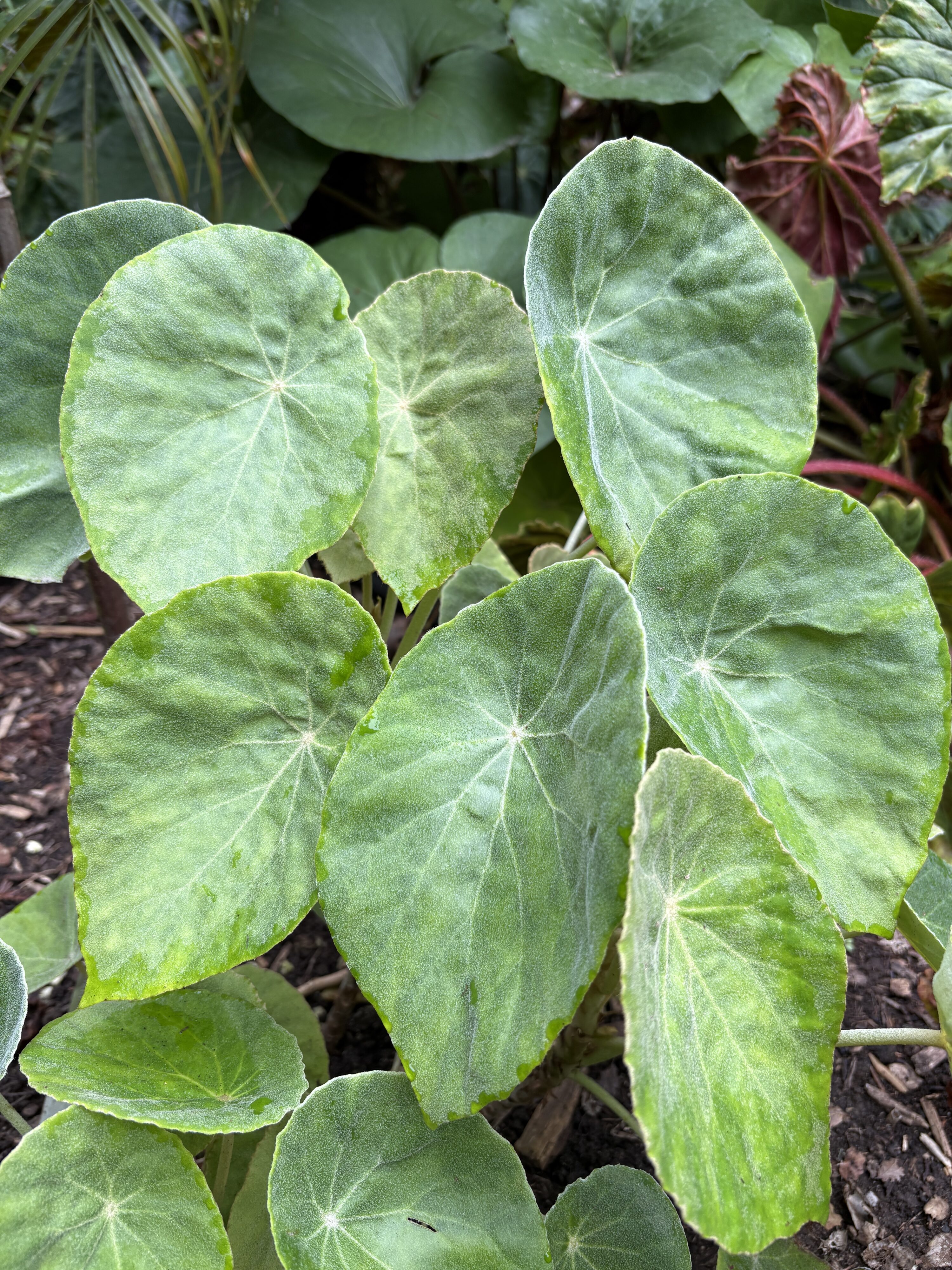
-
Begonia angularis
Highlight Month:
October
Nativity:
South and SE Brazil
Growth Habit:
This species blooms sparsely in the upper leaf axils from winter to spring with white flowers. The leaves are a soft grey-green with attractive pale grey venation and occasional reddish undersides. The plant can reach over 8 feet tall in the landscape and is in the “cane-like” category, producing multiple stems from the base. Pinch the growing tips of tall stems to give it a bushier appearance. The specific epithet, angularis, references the uniquely angled stems with six prominent ribs, a defining characteristic of this species.
Growing Requirements:
Considered an excellent choice for the beginner begonia grower, B. angularis prefers shade, moist soils, and can be grown outdoors in Santa Barbara.
Features:
Begonia angularis is native to the Atlantic coastal forest of Brazil, an incredibly diverse region under threat due to ninety percent of the area being heavily fragmented by human activity. Almost two hundred Brazilian Begonia species occur in this cool, moist upland strip along the Atlantic Ocean, with only a few found in the adjacent Amazonian rainforests. This species was first described by Italian botanist Guiseppe Raddi in 1820 and introduced into European horticulture in 1845.
Where at Lotusland:
Fern Garden, between the pool and Dracaena Circle
-
Phanera yunnanensis
climbing Chinese orchid vine
Highlight Month:
October
Nativity:
South-Central China, Myanmar, and Thailand
Growth Habit:
This vining plant in the legume family comes from China, Myanmar, and Thailand and displays light pink flowers from late summer into fall. Vines reach 15-20’ long and require a structure or another plant to climb on.
Growing Requirements:
They prefer part to full sun for best flowering, are tolerant of drought once established and are hardy to USDA Zone 7b.
Features:
After decades of taxonomic reshuffling and reorganization of the subfamily Cercidoideae, 82 species have now been placed in the genus Phanera. P. yunnanensis was previously in the genus Bauhinia and continues to be sold as such at nurseries. Phanera are separated on the basis that all are vines or lianas (woody vines) with tendrils, have a lobed calyx, have 2-3 fertile stamens, and are distributed across Asia and Australasia.
Where at Lotusland:
Fern Garden entrance from Staff Parking Lot
-
Neoregelia chlorosticta
Highlight Month:
October
Nativity:
There are 116 accepted species in the genus Neoregelia, all native to Brazil, Peru, and Venezuela. N. chlorosticta is native to forests in Rio de Janeiro to Paraná, Brazil.
Growth Habit:
This striking bromeliad has year-round interest with burgundy leaves splotched with lime green. Individual tank rosettes are comprised of a funnel of overlapping leaves that hold water, collect organic matter for nutrients, and serve as habitat for frogs and other organisms. Small flowers develop in the cup and emerge just above the water surface with lavender-blue petals. Like many Neoregelia, this species is best viewed from the top down so the flowers can be observed, but the leaves are also showy when backlit by the sun.
Growing Requirements:
In habitat, most Neoregelia grow epiphytically in trees but can also grow in the ground in the landscape. They prefer filtered light in part shade. Vivid leaf coloration can be achieved by growing plants in brighter light but not full sun as they may sunburn. After blooming the main rosette of the plant will die but it produces offsets or “pups” off the main rhizome, or stem. These offsets can be removed and planted elsewhere when they are about 1/3 the size of the original plant or can be left on to form a clump.
Features:
The genus name honors Eduard von Regel (1815-1892), a German botanist who was director of the Botanical Garden of St. Petersburg, Russia, and founder and editor of ‘Gartenflora,’ a monthly illustrated botanical magazine. The specific epithet refers to the green dots on the vinaceous (wine colored) leaves. Because of its impressive coloration, N. chlorosticta is frequently used in hybrid crosses or cultivated selections. The Bromeliad Society International lists 196 registered cultivars with N. chlorosticta parentage.
Where at Lotusland:
N. chlorosticta can be viewed in both Bromeliad Gardens at Lotusland. The Lower Bromeliad Garden hosts impressive clumps of this species mounted on tree stumps as well as in the ground.
-
Aristolochia fimbriata
white-veined dutchman’s pipe
Highlight Month:
October
Nativity:
Bolivia, Paraguay, S. Brazil, Uruguay, and N.E. Argentina
Growth Habit:
This small Aristolochia displays charming maroon/yellow flowers with otherworldly fringed edges and rounded leaves featuring dramatic silver veins. A. fimbriata is native to Bolivia, Paraguay, S. Brazil, Uruguay, and N.E. Argentina. It is a food source for pipevine swallowtail butterfly caterpillar. The stems die back to an underground caudex during the winter but will spread to 2’ during the growing season as a groundcover. This plant can also grow as a specimen in a hanging basket or looks nice spilling over a rock wall. Because this species is deciduous, it is easy to control and will not take over the garden like other Aristolochia.
Growing Requirements:
This species is hardy to USDA Zones 7a to 9b and prefers shade but can handle morning sun.
Features:
The common name “dutchman’s pipe” refers to the flower shape resembling Dutch meerschaum pipes made from the clay mineral sepiolite. The genus Aristolochia comes from the Greek aristos, meaning “best,” and locheia, meaning “childbirth or delivery,” in reference to the flower resembling a human fetus in the womb. Species in this genus have also been used as an ancient Greek treatment for pain and infections related to childbirth. The flowers are pollinated by flies who become trapped in the long floral tube by downward pointing hairs. The following day, these hairs wilt and the flies are released covered in pollen to bring to another flower. The mature brown fruits resemble upside down parachutes filled with small triangular seeds.
Where at Lotusland:
Upper Bromeliad Garden
-
Bulbine natalensis
broad-leaved bulbine, rooiwortel
Highlight Month:
October
Nativity:
This plant is native to KwaZulu-Natal in eastern South Africa where it grows on sandstone cliffs and dry river valleys. It is considered a pioneer species in habitat and will readily colonize disturbed areas.
Growth Habit:
Bulbine natalensis is a soft, spineless succulent that resembles an Aloe. It forms solitary rosettes about 1’ wide and flowers in the late winter/early spring. Flowers are yellow, lightly fragrant, and are held on an unbranched inflorescence 1-2’ above the main rosette. The filaments of the stamens are bearded, making the flowers appear fuzzy.
Growing Requirements:
It is easy to grow in well-draining soil in full sun. Plants usually live for 5-8 years but will seed around the garden.
Features:
The Afrikaans common name for this plant is rooiwortel (red root) in reference to the orange/red color of the lower stem when it is damaged and exposed to light. The sap of this plant is used medicinally and as an aphrodisiac and testosterone booster.
Where at Lotusland:
Bulbine natalensis can be found in the Succulent Garden at Lotusland growing below the Pachypodium.
-
Ficus carica ‘Panache’
Striped Tiger Fig
Highlight Month:
October
Nativity:
Garden Origin
Growth Habit:
Ficus carica ‘Panache’ will grow 12-20’ tall but can be pruned for ease of picking.
Growing Requirements:
Full sun, will need supplemental water in extended periods of drought.
Features:
This fig cultivar produces unique variegated fruit with yellow and green stripes! New stems and leaves display a slight variegation as well. Striped tiger figs ripen late in the season compared to other fig selections and our plant at Lotusland is just now producing tasty edible fruit with strawberry-pink, sweet tasting interior flesh. Fig “fruits” are a type of multiple fruit called a syconium, a fleshy, hollow structure lined internally with multiple flowers. Tiny pollinating wasps enter the syconium through an ostiole, the opening on the underside, to pollinate the flowers which later develop into single-seeded fruits (drupelets) that line the interior.
Where at Lotusland:
Deciduous Orchard
-
Clerodendrum bungei
cashmere bouquet
Highlight Month:
October
Nativity:
China to Vietnam and Taiwan
Growth Habit:
A shrub up to 6 feet tall. It spreads quickly by underground runners, and can cover a wide area if new sprouts are not pulled up. It is deciduous, and the stems can be cut to the ground after the leaves drop.
Growing Requirements:
Full to partial shade
Features:
Clusters of very fragrant rosy red/purple flowers from mid summer to fall. The leaves are dark green, sometimes veined in purple.
Where at Lotusland:
There is a large planting of C. bungei in the Fern Garden, behind the wall alongside the pool.
-
Vriesea fosteriana
Highlight Month:
October
Nativity:
Southern Brazil
Growth Habit:
A perennial forming a loose rosette. The leaves can reach up to 3 feet long and the flower spike grows over 5 feet tall. The flowers bloom at night and are pollinated by bats in habitat.
Growing Requirements:
For best color V. fosteriana should be grown with filtered light but not in direct sun. The plant grows best in a well-drained soil as it is shallow-rooted and may rot in wet soils. It also obtains moisture collected in the “cup” in the center of the leaves.
Features:
This bromeliad is grown for its impressive foliage which has striking wavy patterns on a dark green background. The pale yellow bell-shaped flowers are arranged in rows on a spike that emerges from the center of the plant. There are several varieties and cultivars including ‘Red Chestnut’ which has the same striking markings but with dark red coloring.
Where at Lotusland:
There are several V. fosteriana and clumps of ‘Red Chestnut’ in the Upper and Lower Bromeliad Gardens.
-
Encephalartos ferox
Tongaland cycad
Highlight Month:
October
Nativity:
South Africa, Mozambique
Growth Habit:
This cycad is typical of many African species of Encephalartos. It has a rosette of very tough and spine-tipped leaves that arise from a large stem. The stems may be one and a half feet in diameter. This species grows in coastal areas in grass and other scrub vegetation from KwaZulu Natal north to Mozambique. It often occurs within 50 yards of the beach.
Growing Requirements:
E. ferox does best with full sun and regular water. It must have excellent drainage to prevent fungal problems in our cold, wet winters. Cycads are slow-growing.
Features:
The brightly colored red cones of E. ferox as well as the glossy green foliage make this a very handsome garden specimen.
Where at Lotusland:
Cycad Garden



